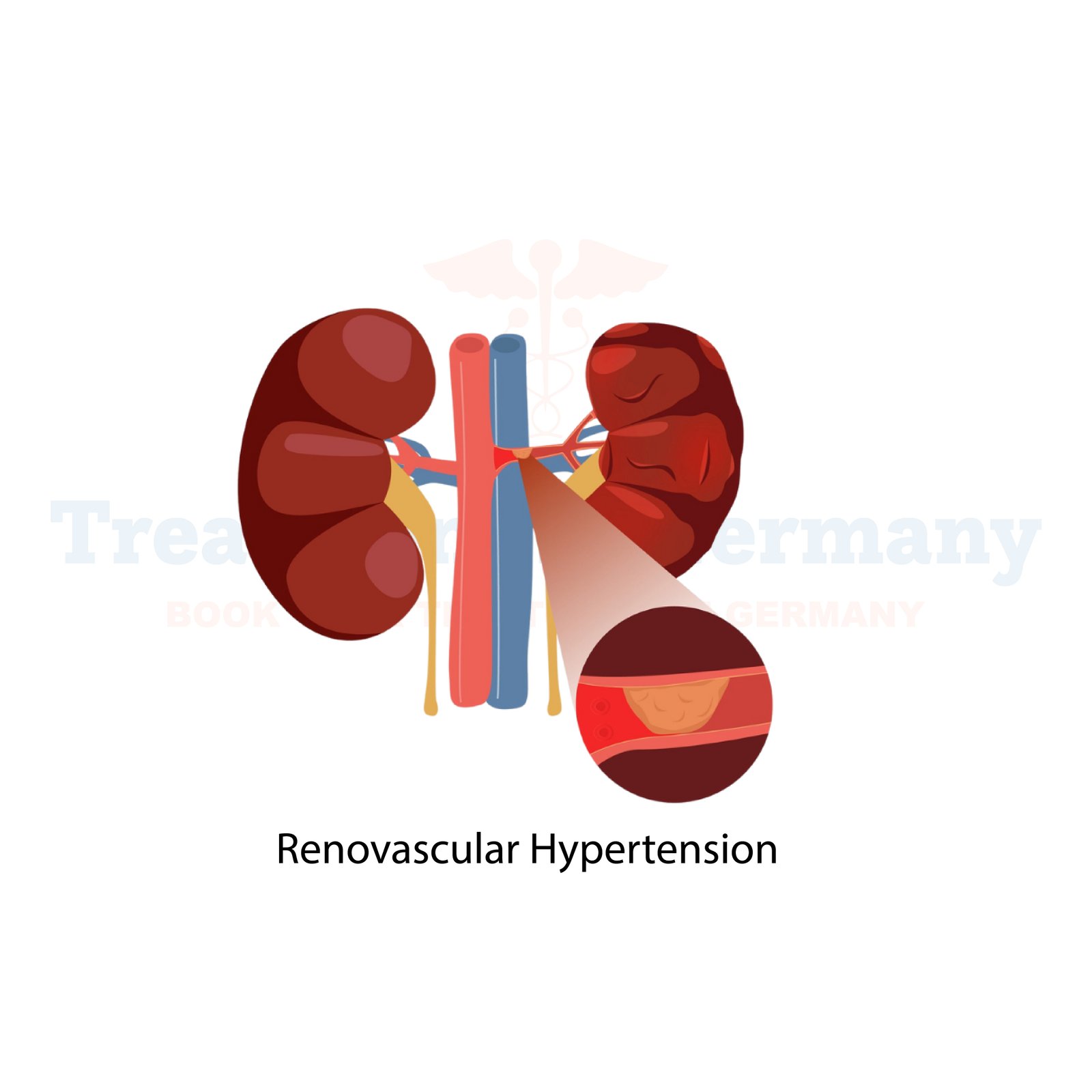What is Renovascular Hypertension?
Renovascular hypertension is a condition characterized by high blood pressure resulting from narrowing or blockage of the arteries supplying the kidneys.
These narrowed arteries, often due to conditions like atherosclerosis or fibromuscular dysplasia, can lead to decreased blood flow to the kidneys, triggering the body's blood pressure regulation system to compensate by increasing blood pressure.
Side Effects of Renovascular Hypertension:
Left untreated, renovascular hypertension can lead to serious complications such as:
How is Renovascular Hypertension Diagnosed?
Diagnosing renovascular hypertension typically involves a combination of medical history review, physical examination, and diagnostic tests, including:
Potential Treatments of Renovascular Hypertension:
1. Lifestyle modifications: Adopting a healthy lifestyle can help manage renovascular hypertension. This includes maintaining a balanced diet low in sodium and saturated fats, regular exercise, quitting smoking, and managing stress.
2. Medications: Your doctor may prescribe medications to help lower blood pressure, such as angiotensin-converting enzyme (ACE) inhibitors, angiotensin II receptor blockers (ARBs), calcium channel blockers, or diuretics.
3. Angioplasty and stenting: In cases where there is significant blockage or narrowing of the renal arteries, a minimally invasive procedure called angioplasty may be performed. During angioplasty, a catheter with a deflated balloon is inserted into the artery and inflated to widen the artery. Sometimes, a stent (a small mesh tube) is placed to keep the artery open.
4. Surgery: In severe cases or when angioplasty is not feasible, surgical revascularization may be considered. This involves bypassing the blocked or narrowed portion of the artery to restore proper blood flow to the kidney.
5. Follow-up care: Regular follow-up appointments with your healthcare provider are essential to monitor blood pressure, kidney function, and overall health. Adjustments to treatment plans may be made as needed to ensure optimal management of renovascular hypertension.
👉 Contact us for further information and receive a complimentary consultation.

.webp)
.webp)
 (1).webp)
 (1).webp)


.webp)
.webp)
 (1).webp)
 (1).webp)

